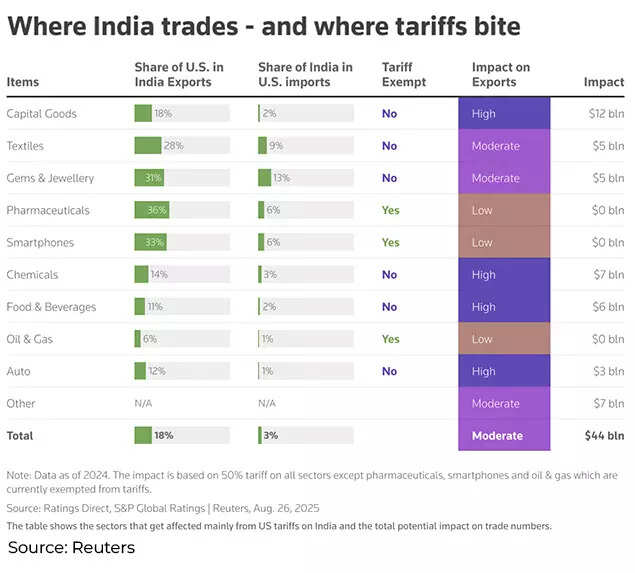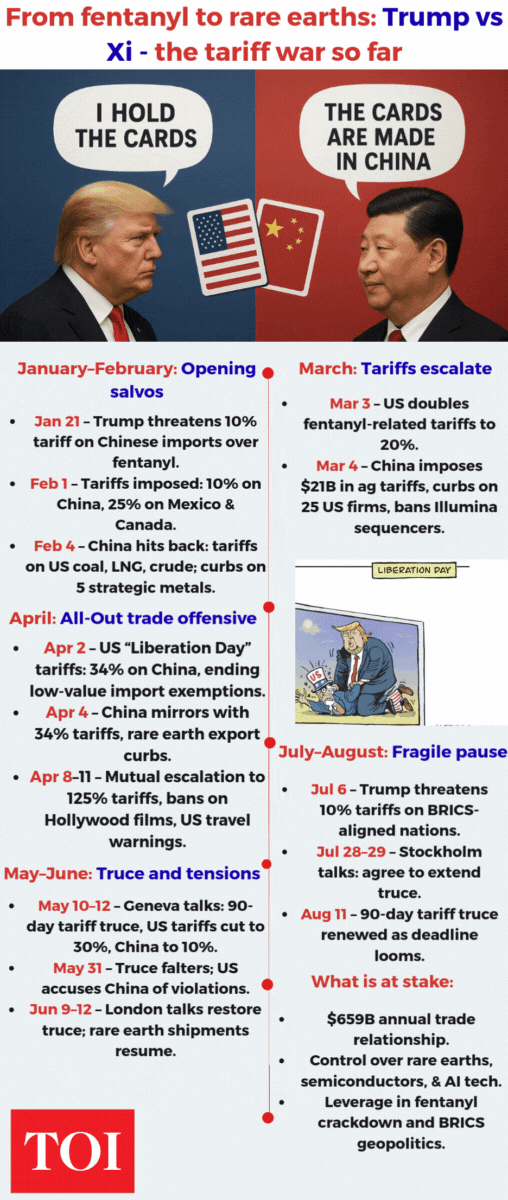US President Donald Trump’s global tariff war has had one major consequence – India and China, the world’s second and fifth largest respectively – are growing closer, with focus on trade ties. The development is significant since ties between the two neighbouring countries had been strained in the last few years.It appears that even before Trump announced his ‘Liberation Day’ tariffs in April, China had reached out to India, signalling willingness for economic collaborations. In March, when Trump escalated trade tensions with China, Beijing initiated discreet diplomatic communications with India, according to a Bloomberg report.
Xi Jinping ’s secret letter
Chinese President Xi Jinping sent a letter to President Droupadi Murmu to explore possibilities of bilateral engagements. An Indian official with knowledge of the situation told Bloomberg that the letter expressed worries about potential US deals that could affect Chinese interests and designated a regional official to lead Beijing’s diplomatic initiatives. The message was subsequently conveyed to Prime Minister Narendra Modi, the report said.Following Xi’s letter to Murmu in March of this year, Beijing released a statement from the Chinese leader praising bilateral relations. His senior officials, including Vice President Han Zheng, subsequently adopted similar positive rhetoric to characterise the improving relationship between the two nations.

Where India trades – and where tariffs bite
Improving India-China ties
National Security Adviser Ajit Doval, who maintains reliable and direct communication with China’s senior leadership, is spearheading the diplomatic engagement. As India’s special representative for border negotiations, Doval undertook official visits to China in December 2024 and June 2025.The Indian administration began substantial efforts to enhance Chinese relations in June, according to the same source. This timing coincided with increasingly difficult trade negotiations with the US, whilst New Delhi officials expressed frustration over Trump’s statements about mediating between India and Pakistan following their May confrontation.Also Read | ‘Deal dependent upon…’: India indicates no compromise on red lines for US trade pact; ‘we cannot overlook some..’During July, S. Jaishankar, India’s External Affairs Minister, conducted his first meeting in five years with Wang Yi in Beijing. Jaishankar addressed concerns regarding “restrictive trade measures and roadblocks”, indirectly highlighting Beijing’s recent limitations on rare earth exports that affected supply networks. Officials in New Delhi confirmed that China provided assurances regarding the supply of fertiliser and rare earth materials during these discussions.Subsequently, several positive developments emerged to strengthen bilateral relations. Both nations are preparing to restart direct flight services as soon as next month. China has reduced restrictions on urea exports to India, whilst the Modi administration has reinstated tourist visa services for Chinese citizens after a prolonged suspension.

Highest rates for ‘BICS’ nations
The Adani Group, led by Gautam Adani, is considering collaboration with Chinese electric vehicle manufacturer BYD Co. for battery production in India, advancing their renewable energy initiatives, Bloomberg News reported. Additionally, Reliance Industries Ltd. and JSW Group have been quietly pursuing business arrangements with Chinese companies amidst improving diplomatic relations, the report said.By August, India-China relations showed signs of improvement. Both countries, affected by Trump’s tariffs, took significant steps to progress beyond their 2020 border conflict by strengthening their commitment to resolve historical territorial disputes dating to colonial times. Modi’s upcoming visit to China, his first in seven years, further demonstrates this diplomatic advancement.
The US role in India-China ties getting better
The United States’ carefully cultivated relationship with India, developed across multiple administrations to counter China’s growing influence, now faces significant challenges. The situation shifted dramatically when Trump implemented 50% tariffs on Indian exports due to India’s Russian oil purchases, causing considerable distress to Modi’s administration.“Trump is indeed the great peacemaker — he deserves all the credit for stimulating the incipient rapprochement between Delhi and Beijing,” Ashley Tellis, senior fellow at the Carnegie Endowment for International Peace and a former US diplomat in New Delhi, said ironically. “He has singlehandedly pulled this off by treating India as an enemy,” Tellis told Bloomberg.The scheduled meeting between Modi and Xi is set for September 1 during the Shanghai Cooperation Organisation summit in Tianjin, situated near Beijing.The compelling economic advantages of strengthening bilateral relations cannot be disputed.

Trump vs Xi – the tariff war so far
The Chinese economy faces a slowdown amidst deflation, whilst grappling with surplus production in sectors like electric vehicles and solar panels. With its substantial population of 1.4 billion, predominantly young people, India presents a valuable market opportunity for China, particularly as it encounters growing trade barriers in the United States, European nations and other regions.Indian policymakers have begun to recognise the necessity of Chinese capital investment in manufacturing to achieve Modi’s target of raising the sector’s contribution to 25% of GDP. According to Bloomberg Economics, if substantial American tariffs persist, approximately 60% of India’s US-bound exports could cease, potentially reducing GDP by nearly 1% over the medium term.Also Read | Trump’s tariffs: India pivots toward China and Russia – should US be worried?Both nations’ regulatory constraints have hampered India’s economic growth aspirations. As reported by Bloomberg News, most Chinese employees at Foxconn Technology Group’s iPhone facilities in southern India were instructed to leave, whilst Beijing authorities have prompted regulatory bodies and regional governments to restrict technology transfers and equipment exports to India.“The economic possibilities are huge if the two countries can settle differences and build trust,” said Antara Ghosal Singh, a fellow at the Observer Research Foundation, a New Delhi based think tank.“Leaders of both countries have often spoken about economic possibilities but haven’t been able to get over trust issues,” she said. “Trump is a good incentive for both countries to reconsider their options,” she told Bloomberg.




